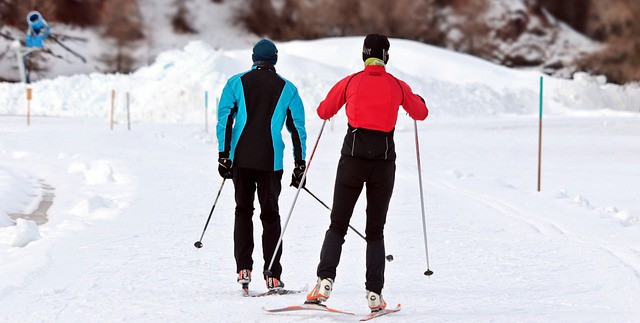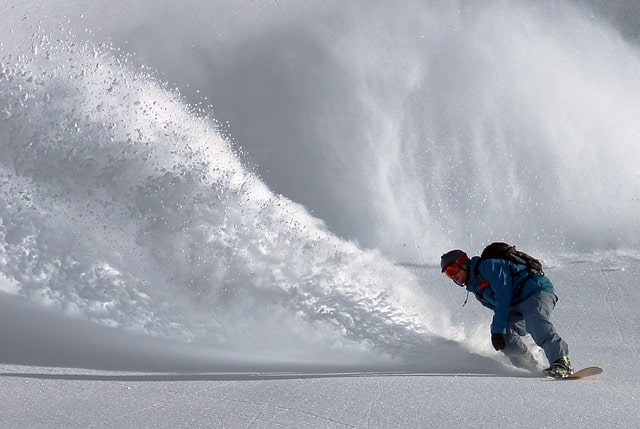Winter sports injury prevention and treatment
Tis the season for winter sports (and winter sports injury)! Athletes and weekend warriors take to the snow and ice to conquer the cold. Whether you’re a snow worshiper or you get inspired by the Olympics to go out and try your hand at something new, winter sports are some of the most exhilarating…and the most dangerous.
About a quarter million Canadians suffer from a winter sports injury each year. A winter sports injury can take 3-6 months or more for a full recovery.
Fortunately, there are physiotherapy techniques can help prevent many of these injuries. And if you’ve already suffered an injury there are steps you can take to recover more quickly and prevent re-injury in the future.
Ankle sprain and ankle injury, lower back pain and strain, injuries to the ligaments of the knee, and wrist sprains and breaks are some of the most common of the winter season sports. Read on to learn how to prevent and recover from the most common winter sports injuries.
Skiing Injuries

The most common skiing injuries are:
- Knee Ligament Injuries
- Wrist Injuries
- Lower Back Pain
When these injuries happen: Knee injuries (damaged ACL and MCL) are the most common ski injuries. This is common when the edge of your ski catches as you turn, twisting the knee.
A wrist injury is common when you fall and reach down to brace yourself.
Low back pain can result from an awkward fall, or even just the joint impact on the vertebrae and supporting muscles during downhill skiing.
How these injuries can be prevented: If you have an existing knee condition, a rehabilitation program to strengthen the muscles that support the knee and a custom knee brace can help prevent an injury. Adjusting your ski bindings for a quick release in the event that you fall or catch an edge can help prevent the twisting that leads to injury by disconnecting your boot from the ski.
While wrist guards offer some protection, the best way to prevent a wrist injury is to tuck and roll during a fall instead of bracing with your arms.
To protect your spine, take it easy on the slopes. If you have an existing issue with lower back pain pay close attention to your form. Talk with your physiotherapist about sport injury prevention with heat and cold therapy and massage after skiing. Also, avoid highly technical and steep slopes, as these are higher impact on the joints and more likely to cause a fall.
Snowboarding Injuries

The most common snowboarding injuries are:
- Wrist Injury
- Shoulder Injuries
When these injuries happen: As with skiing, a wrist injury often strikes snowboarders when bracing for a fall.
Shoulder injuries are common when a snowboarder falls onto the shoulder or arm, causing strain or even dislocation.
How these injuries can be prevented: Fall better. Practice falling with a tuck and roll – like a somersault – to disperse the weight of a fall and avoid these common injuries.
Ice Skating and Hockey Injuries
The most common skating and hockey injuries are:
- Ankle Sprain
- Knee Injuries
- Wrist Injury
When these injuries happen: Ankle injuries are common when skating if the skater loses balance and the ankle turns at an angle and cannot support body weight. Quick changes in direction and hard landings can be perilous for delicate ankle joints.
As skaters swivel their skates to direct their motion, a twisting motion happens in the knees which can lead to a ligament injury. The ice can also cause injury to the kneecap during a fall.
Just like skiers and snowboarders, wrist injuries happen most often when bracing for a fall.
How these injuries can be prevented: A good warmup can go a long way in preventing knee ligament injuries by loosening the soft tissues (muscles, tendons, and ligaments) around the knee and making them more flexible and resistant to tears.
Knee pads can prevent a kneecap injury on the ice. These are a good idea for any novice skaters and all hockey players.
Kinesiology tape or an ankle brace may be used to help support the soft tissues of the ankle and prevent a twist or sprain.
Injuries to the knees, ankles, and wrists can all be prevented with proper equipment and maintenance. Having quality skates and protective equipment that is well maintained can go a long way for sport injury prevention on the ice.
Sports Injury Treatment
If you’ve suffered a winter sports injury, seek immediate medical attention. Appropriate sports injury treatment including physiotherapy, massage, and supplemental treatments can help you heal completely, speed your recovery, and help you prevent a future winter sports injury.
